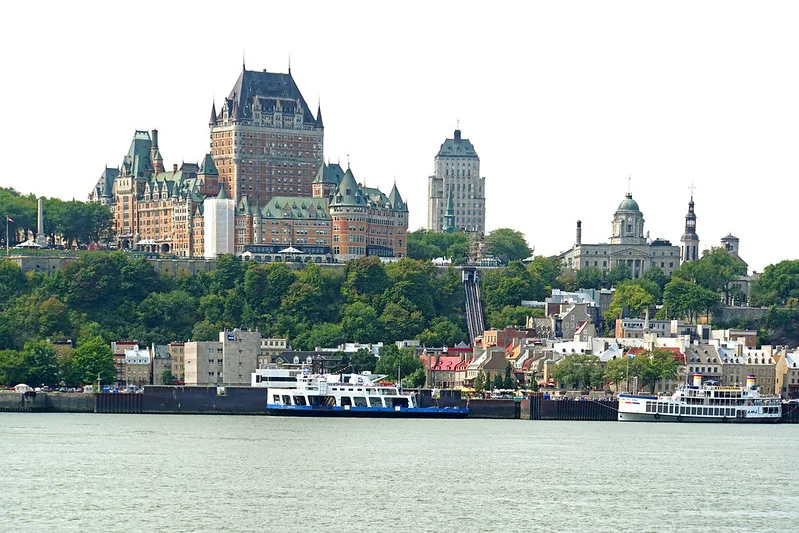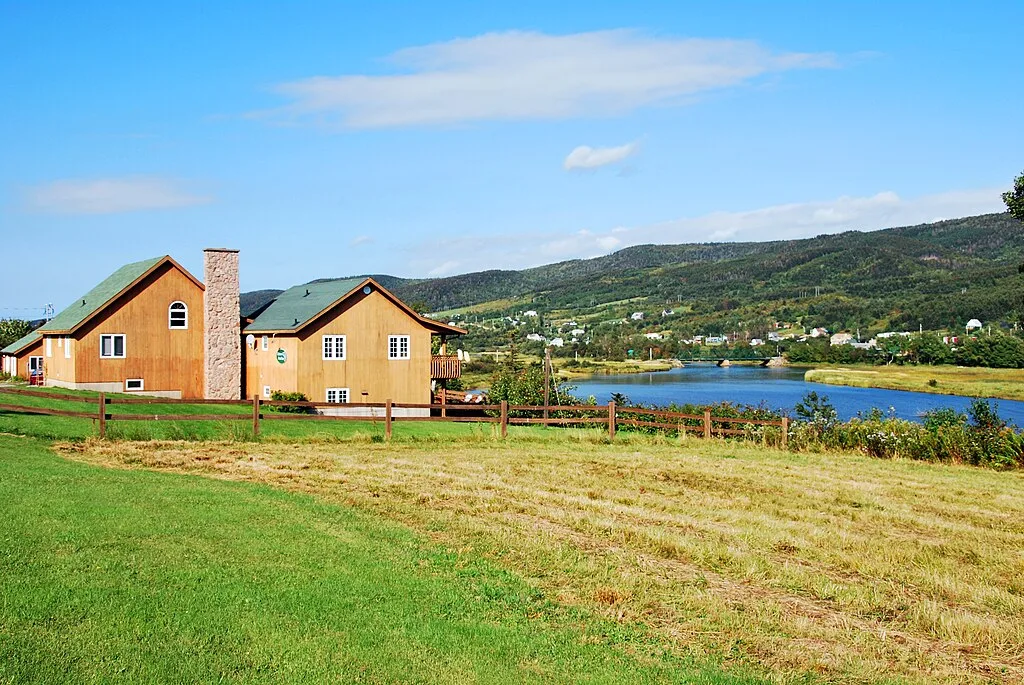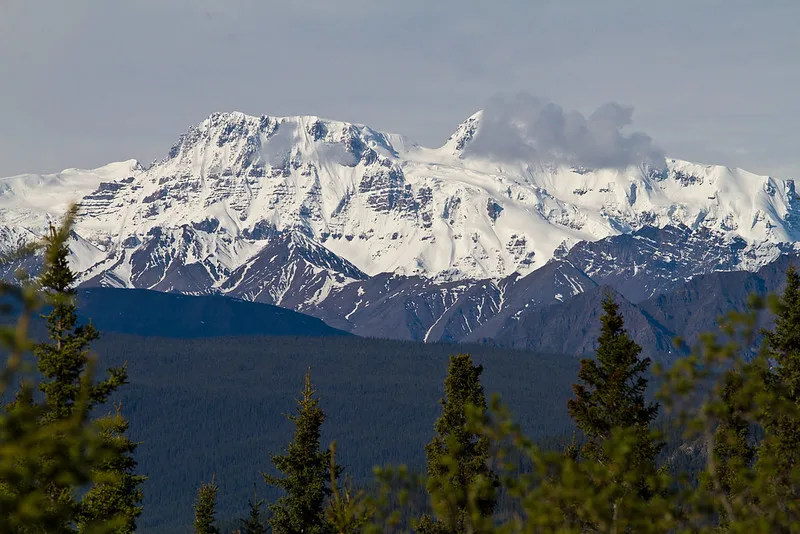Are you ready to uncover the wonders of Canada? From the breathtaking cliffs of Newfoundland to the awe-inspiring Rockies of Alberta, this guide will take you on a journey through the heart and soul of Canada’s diverse regions.
Each region in Canada has its own unique allure, whether it’s the bustling cultural hubs of Montreal and Toronto or the serene landscapes of the Prairies and the North. Discover what makes each area special and why it’s worth exploring.
Imagine marveling at the Northern Lights in Yukon, savoring fresh seafood in Prince Edward Island, or wandering the historic streets of Quebec City. These unforgettable experiences and more await you in Canada.

Author: Dennis Jarvis – flickr.com
Atlantic Provinces of Canada
Newfoundland and Labrador
- Nature’s Beauty and Ancient History: Newfoundland and Labrador sit at Canada’s eastern edge. This province has two main parts: the island of Newfoundland and the mainland Labrador. The area is known for its breathtaking scenery. The rugged coastline features towering cliffs and peaceful bays. A special place here is L’Anse aux Meadows, where Vikings settled over a thousand years ago.
- St. John’s: A Colorful Capital: St. John’s, the capital, is famous for its colorful houses and vibrant arts scene. From Signal Hill, you get amazing views of the city and the ocean. The people here are known for their friendliness and unique accent, influenced by Irish and English settlers.
Prince Edward Island
- Small Island, Big Charm: Prince Edward Island, or PEI, is the smallest Canadian province. It’s known for its red sandy beaches, rolling green fields, and delicious seafood. The red soil here is perfect for growing potatoes. PEI is also famous for “Anne of Green Gables,” a beloved book set on the island.
- Charlottetown: Where Canada Began: Charlottetown is the capital and is called the “Birthplace of Confederation” because leaders met here in 1864 to talk about forming Canada. The city has historic buildings and a lively arts scene. Visitors enjoy biking on the Confederation Trail, exploring old lighthouses, and tasting fresh seafood like mussels and lobster.
Nova Scotia
- Maritime Magic and Scenic Views: Nova Scotia, meaning “New Scotland,” has a beautiful coastline and rich maritime culture. It boasts UNESCO World Heritage sites like Lunenburg and the Joggins Fossil Cliffs. The province’s culture is influenced by its Celtic and Acadian roots.
- Halifax: The Heart of Nova Scotia: Halifax, the capital, is a bustling port city with a lively waterfront. It has many historic sites, such as the Halifax Citadel and the Maritime Museum of the Atlantic. The city is also a cultural hub, with many festivals, art galleries, and theaters.
- Explore Nova Scotia’s Nature: Nova Scotia offers natural wonders like the Cabot Trail, a scenic drive with stunning ocean and mountain views. The Bay of Fundy, known for having the world’s highest tides, is another highlight. Outdoor activities abound, including hiking, beachcombing, and exploring parks.

Author: chensiyuan – wikimedia.org
New Brunswick
- Rich Forests and Coastal Wonders: New Brunswick is famous for its dense forests, winding rivers, and beautiful coastlines. It’s the only province in Canada where both English and French are official languages. The culture here is shaped by Indigenous, Acadian, and Loyalist influences.
- Fredericton: Arts and Heritage: Fredericton, the capital city, is known for its historic buildings and vibrant arts community. The Beaverbrook Art Gallery here features impressive artworks. The city is alive with festivals celebrating music, theater, food, and crafts.
- Saint John: A City of Firsts6 Saint John is the oldest incorporated city in Canada. It has a historic Uptown area with old buildings and a busy market. A unique sight here is the Reversing Falls, where the Bay of Fundy’s tides reverse the flow of the Saint John River.
- Moncton: Fun and Natural Beauty: Moncton is known for its strong economy and cultural diversity. It features Magnetic Hill, where cars seem to roll uphill, creating a fun illusion. Nearby Fundy National Park offers lush forests, waterfalls, and the dramatic tides of the Bay of Fundy.
Central Canada
Quebec: A Blend of French and Canadian Culture
Quebec is the largest province in Canada by area and is unique because most people speak French. The province has a rich culture that mixes French and Canadian traditions. Quebec City, the capital, is famous for its historic Old Town, with cobblestone streets and the grand Château Frontenac hotel. It feels like a piece of Europe in Canada. Montreal, the largest city, is a hub for festivals, music, and the arts. Quebec also has beautiful natural places like the Laurentian Mountains and the Gaspé Peninsula.
Ontario: Canada’s Most Populous Province
Ontario is the most populated province in Canada and home to the nation’s capital, Ottawa. Ottawa is known for its historic Parliament Hill, the lovely Rideau Canal, and many museums. Toronto, the capital of Ontario and the largest city in Canada, is a bustling metropolis with a diverse population. It offers world-class dining, shopping, and entertainment. Highlights include the CN Tower and the Royal Ontario Museum. Ontario also features natural wonders like Niagara Falls, the Great Lakes, and Algonquin Provincial Park.
Prairie Provinces
Manitoba: Heart of Canada
Manitoba is located in central Canada and is known for its vast prairies, forests, and lakes. Winnipeg, the capital city, is known for its vibrant arts scene, including the Royal Winnipeg Ballet and the Winnipeg Art Gallery. The Forks is a historic site in Winnipeg with shops, restaurants, and outdoor activities. Manitoba’s natural attractions include Riding Mountain National Park and the northern town of Churchill, famous for polar bear watching.
Saskatchewan: Land of Open Skies
Saskatchewan is known for its wide-open prairies and farmland. It is a major agricultural province, growing wheat and canola. Regina, the capital, is home to the Royal Saskatchewan Museum and Wascana Centre, a large park. Saskatoon, the largest city, has a vibrant cultural scene with festivals and music. Natural beauty in Saskatchewan includes Prince Albert National Park, offering hiking, boating, and wildlife viewing.
Alberta: From Mountains to Prairies
Alberta is famous for its diverse landscapes, from the Rocky Mountains to wide prairies. Calgary, known for the Calgary Stampede rodeo, and Edmonton, known for the West Edmonton Mall, are the two major cities. Alberta’s natural beauty includes Banff and Jasper National Parks, which are famous for their stunning mountain views, hiking trails, skiing, and wildlife.
West Coast
British Columbia: Nature’s Playground
British Columbia (BC) is known for its incredible natural beauty, with mountains, forests, and a rugged coastline. Vancouver, the largest city, is a busy seaport with modern buildings and natural beauty. Popular spots include Stanley Park and Granville Island. Victoria, the capital, is on Vancouver Island and is known for its historic buildings and beautiful gardens. BC offers many outdoor activities like skiing in Whistler, hiking in the Pacific Rim National Park, and visiting the Okanagan Valley’s vineyards.
The North
Yukon: Land of the Midnight Sun
The Yukon is famous for its vast wilderness and the history of the Klondike Gold Rush. Whitehorse, the capital, is a gateway to nature, including Kluane National Park with Canada’s highest peak, Mount Logan. The Yukon offers adventures like dog sledding, hiking, and viewing the Northern Lights. Dawson City, with its preserved Gold Rush heritage, is a popular tourist spot.

Author: Arthur T. LaBar – flickr.com
Northwest Territories: Land of Natural Wonders
The Northwest Territories are known for their stunning landscapes, including the Nahanni National Park Reserve, a UNESCO World Heritage site. Yellowknife, the capital, is famous for its arts scene and as a great place to see the Northern Lights. The region is rich in Indigenous culture, with many communities preserving their traditions. Outdoor activities like fishing, canoeing, and hiking are popular here.
Nunavut: The Arctic Adventure
Nunavut is the newest and largest territory in Canada, created in 1999. It is known for its vast, remote landscapes and rich Inuit culture. Iqaluit, the capital, is located on Baffin Island and serves as the hub of the territory. Nunavut offers unique experiences like dog sledding, ice fishing, and exploring the Arctic tundra. The territory is home to amazing wildlife, including polar bears, caribou, and many birds. Inuit art and crafts are highly valued and are an important part of Nunavut’s culture.
Conclusion
Canada’s diverse regions offer unique attractions, from Newfoundland’s rugged coastline to Alberta’s awe-inspiring Rockies. The Atlantic Provinces boast historical sites, vibrant cities, and natural beauty, including Northern Lights and fresh seafood experiences. Central Canada, with Quebec and Ontario, features a blend of French and Canadian cultures, bustling urban centers, and natural wonders like Niagara Falls. The Prairie Provinces are characterized by vast landscapes, significant agricultural output, and lively arts scenes in cities like Winnipeg and Saskatoon.
FAQs
What are some must-visit destinations in Canada?
Canada is a land of extraordinary destinations. From the majestic Rockies in Alberta and the awe-inspiring Niagara Falls in Ontario to the cobblestone charm of Quebec City and the bustling streets of Toronto and Montreal, there’s something for every traveler. Don’t miss the mesmerizing Northern Lights in Yukon and the iconic red sandy beaches of Prince Edward Island.
What unique experiences can I have in the Atlantic Provinces?
The Atlantic Provinces are a treasure trove of unique experiences. Walk in the footsteps of Vikings at L’Anse aux Meadows in Newfoundland, savor the freshest seafood in Prince Edward Island, navigate the breathtaking Cabot Trail in Nova Scotia, and soak up the diverse cultural heritage of New Brunswick.
What cultural highlights can I expect in Quebec?
Quebec offers a vibrant blend of French and Canadian culture. Stroll through the historic streets of Old Quebec with its European flair, dominated by the grand Château Frontenac. In Montreal, immerse yourself in a dynamic arts scene, enjoy world-famous festivals, and delight in a culinary scene that rivals the best in the world.